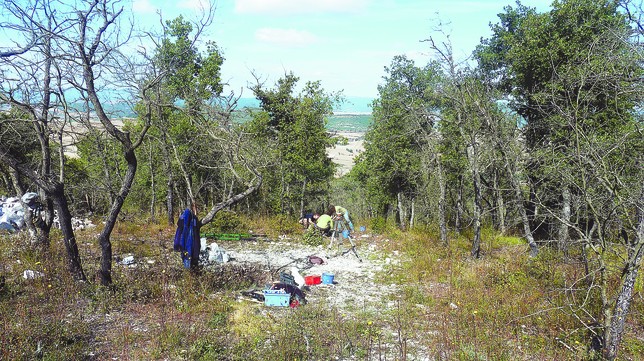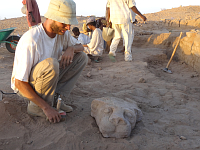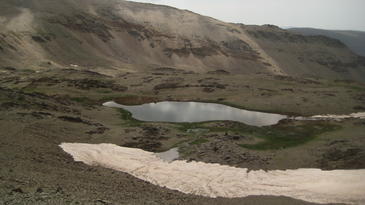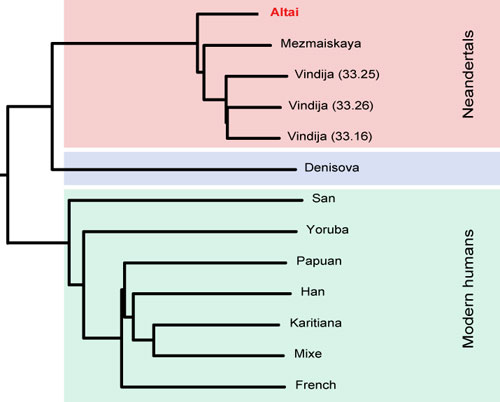The alleged hybrid characteristics are only attributed to morphological data of the bones (the bulk of the paper), what is always subject of great debate. Otherwise most people would just think in terms of Neanderthal, as the individual from Monte Lessini is also from a Mousterian context. By this I do not mean there was no interbreeding in the Neanderthal direction, just that without clear genetic data, I fail to see such morphometric speculations as conclusive in any way.
S. Condemi et al., Possible Interbreeding in Late Italian Neanderthals? New Data from the Mezzena Jaw (Monti Lessini, Verona, Italy). PLoS ONE 2013. Open access → LINK [doi:10.1371/journal.pone.0059781]
Abstract
In this article we examine the mandible of Riparo Mezzena a Middle Paleolithic rockshelter in the Monti Lessini (NE Italy, Verona) found in 1957 in association with Charentian Mousterian lithic assemblages. Mitochondrial DNA analysis performed on this jaw and on other cranial fragments found at the same stratigraphic level has led to the identification of the only genetically typed Neanderthal of the Italian peninsula and has confirmed through direct dating that it belongs to a late Neanderthal. Our aim here is to re-evaluate the taxonomic affinities of the Mezzena mandible in a wide comparative framework using both comparative morphology and geometric morphometrics. The comparative sample includes mid-Pleistocene fossils, Neanderthals and anatomically modern humans. This study of the Mezzena jaw shows that the chin region is similar to that of other late Neanderthals which display a much more modern morphology with an incipient mental trigone (e.g. Spy 1, La Ferrassie, Saint-Césaire). In our view, this change in morphology among late Neanderthals supports the hypothesis of anatomical change of late Neanderthals and the hypothesis of a certain degree of interbreeding with AMHs that, as the dating shows, was already present in the European territory. Our observations on the chin of the Mezzena mandible lead us to support a non abrupt phylogenetic transition for this period in Europe.
While there is little reason to doubt the Neanderthal attribution of these remains, the method of using only HVS-I is a bit antiquated and prone to errors and uncertainties. Follows table S10, with the genetic data (HVS-I) of this and other Neanderthal mtDNA sequences:
Table S10.
Fossil specimen | Country | mtDNA region | Length (bp) | Diagnostic Neanderthals trasversion in HVR1 according to | Reference |
Feldhofer 1 | Germany | Complete mtDNA | 16565 | 16139 A/T 16256 C/A Insertion 16263 A | |
Feldhofer 2 | Germany | Complete mtDNA | 16565 | 16139 A/T 16256 C/A Insertion 16263 A | |
Mezmaiskaya | Russia | Complete mtDNA | 16565 | 16139 A/T 16256 C/A Insertion 16263 A | |
Vindija 75 | Croatia | HVR1 | 357 | 16139 A/T 16256 C/A Insertion 16263 A | |
Vindija 77 | Croatia | HVR1 | 31 | 16256 C/A | |
Vindija 80 (33.16) | Croatia | Complete mtDNA | 31 | 16139 A/T 16256 C/A Insertion 16263 A | |
Vindija 33.25 | Complete mtDNA | 16565 | 16139 A/T 16256 C/A Insertion 16263 A | ||
Engis 2 | Belgium | HVR1 | 31 | 16256 C/A | |
Le Chapelle-aux-Saint | France | HVR1 | 31 | 16256 C/A | |
Rochers de Villenueve | France | HVR1 | 31 | 16256 C/A | |
Scladina | Belgium | HVR1 | 123 | 16256 C/A | |
Monte Lessini | Italy | HVR1 | 378 | 16139 A/T 16256 C/A Insertion 16263 A | |
Monte Lessini Mandibula | Italy | HVR1 | 31 | 16256 C/A | This paper |
El Sidron SD-441 | Spain | HVR1 | 47 | 16256 C/A | |
El Sidron SD-1252 | Spain | HVR1 | 303 | 16139 A/T 16256 C/A Insertion 16263 A | |
EL Sidron 1253 | Spain | Complete MtDNA | 16565 | 16139 A/T 16256 C/A Insertion 16263 A | |
Valdegoba | Spain | HVR1 | 303 | 16139 A/T 16256 C/A Insertion 16263 A | |
Teshik Tash | Uzbekistan | HVR1 | 190 | 16139 A/T 16256 C/A Insertion 16263 A | |
Okladnikov | Russia | HVR1 | 348 | 16139 A/T 16256 C/A Insertion 16263 A |












